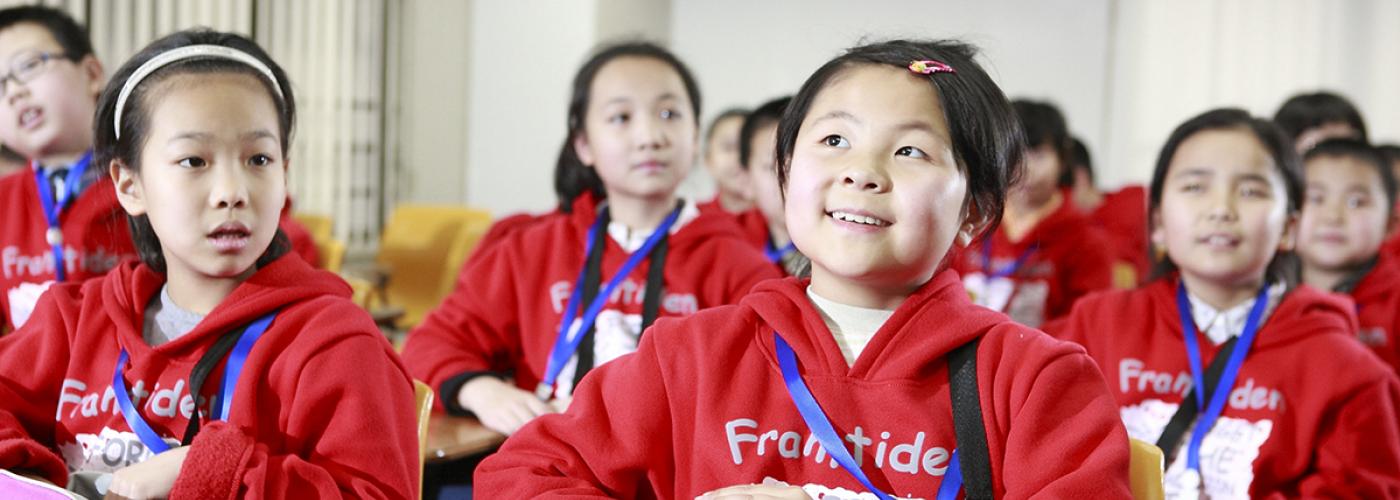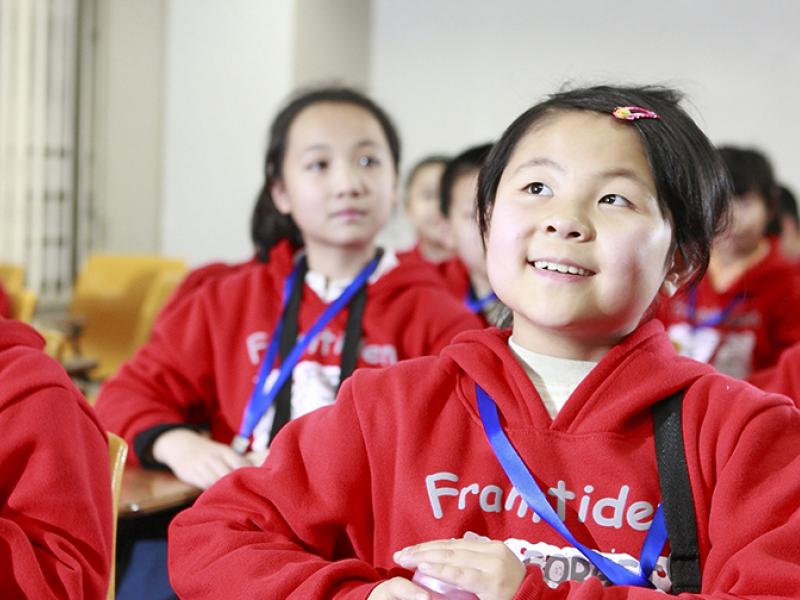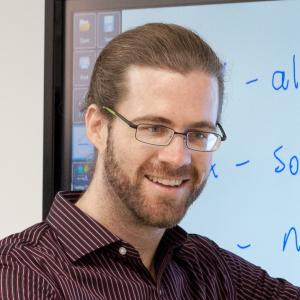16th April 2019
The grammar juggernaut continues to roll on despite many of the criticisms of an overly grammar-oriented focus that we’ve discussed previously here.
In spite of our criticisms, one of the confusing things to make clear is that we don’t discourage teachers from teaching grammar entirely. Even though students may to an extent (especially in Hong Kong!) judge a teacher by how effective they think their grammar lessons are (or even how closely their teacher’s grammar lessons conform to the students’ expectations of what a grammar lesson should be), grammar does play an important role in language learning – especially in the early stages of the process where a new language can seem very contradictory, lacking structure and rules and disorganized. In this situation, your “pattern-hungry brain” strives to make order from the chaos – and this is where grammar teaching comes into its own.
However, it is important to keep the needs and interests of your learners at heart: children learn very differently and process information (especially languages) in a very different way to adults – and so your grammar lessons ought to reflect this.
How is it different to teaching adults?
In many ways, the main ones we focus on here are motivation, processing language, analysis of “form” and the types of tasks that are useful.
Young learners have different motivations to learn
In the most basic sense, younger learners differ from adults in the reason they learn. Typically, but not always, adult are choosing to be in your lesson. There are of course exceptions to this: the learner who needs to pass an exam (the exam is more motivating than being in your class), or the student whose boss tells them that English study is a contractual obligation. However as a generalization, we might say that adults tend to be intrinsically motivated.
Whereas younger learners typically study English because it’s on their school curriculum or because their parents make them. I’m yet to meet a young learner to enrolled in an English course because that’s how they wanted to spend their Saturday mornings.
Young learners process language differently
We know from observations of children, whose brains and language processing centres continue to develop until into early adulthood, process language differently. Part of this is related to cognitive development: we know that a classroom activity based around the possible merits and disadvantages of building a casino next to a primary school isn’t going to generate much discussion with a group of 7 year old learners (they have a limited ability to engage in abstract thought and logical reasoning). It’s also partly to do with language development too. Children learn their first language by identifying the most relevant content words in the context of their own experience. Mum, dada, outside…..these are often the most common words babies learn first. We also know that just before children reach puberty, they go through a lexical explosion as the brain shifts gears, preparing it for adulthood. Children, especially young children, are repetitive learners – repetition in context is the keystone to making progress.
This suggests that children engage with language, and learn it best when it is meaningful and relevant, there are plenty of examples and opportunities to practice, the meaning of the message is the primary focus of any form of communication, and that lexical complexity (and our expectations of this) should be graded loosely on the basis of age.
In this sense, we say that communication in young learner classrooms needs to be meaning driven, in that the priority needs to be communication and negotiation of the message, and the anlaysis of the form and grammar comes secondary to this. This can be a challenge, especially in classrooms where declarative knowledge (e.g. This is the present perfect, or the noun form of procedural is procedure) tends to predominate traditional teaching approaches.
Young learners enjoy very different types of tasks
So how does this effect the types of tasks we choose for our young learners? Well, as a generalization we might say that activities should:
-
Be meaning driven, with a secondary focus on form
-
We reinforce a focus on grammar forms by maximizing repetition
-
Tasks should be age appropriate
-
Tasks should reflect what our learners might need to do/say/use in their daily lives
-
That the tasks are enjoyable and challenging, relative to cognitive development of the learners
Ultimately, you need to remember that what works for adults won’t always work with kids. This means that the traditional practice tasks that you might have used to great success might have limited application for your young learners. This includes: controlled practice gap-fills, Mill drill type tasks (e.g. Have you been to Australia? Yes, I have. Have you eaten pasta in Italy? No, I haven’t. Have you seen the hickey on Mr. Johnson’s neck? No, I haven’t.) and long-winded, meta-language laden teacher presentations (SNORE!)
So here are a few ideas of tasks that work best with young learners….
Use chants and rhymes
Chants and rhymes are a ubiquitous feature of young childhood – If I were to ask you to finish the following sentences, I bet 99% of you could…..so here’s a test:
- Ring-a-ring a rosie…..
- Hickory dickory dock….
- Frere Jacques….frere Jacques….
Why do these stick with you well beyond your childhood years? Because they are repetitive. Repetition is one of the key elements we discussed earlier: it’s one way that the developing brain cements neural processes and pathways and reinforces them as “useful” and necessary to preserve.
How does this apply to grammar lessons with young learners? Well, next time you want to introduce you learners to a particulary structure, try turning it into a chant….does this sound like something you already do when you “drill” target language? Well it should. The key difference here is that you can add rhythm to it to make it catchier and a little bit “stickier” like a nursery rhyme.
For example, I wanted my students to design a poster where they reinvented uses for common objects. So, to introduce the phrases to this, I sat everyone in a circle, and put my hand in a bag containing
some of the objects, and described it to the students:
-
You can use it for cooking, it’s made of metal.
-
You can use to for phone calls, it’s made of plastic.
-
It helps you to study, it’s made of paper.
Notice that all of these phrases follow the same basic stress pattern. Look at the following rhythms that match the phrases above (small dots = weak syllable, O = stressed syllable):
-
. . O . . O . (de de DA de de DA de) = you can use it for cooking
-
. . O . . O . (de de DA de de DA de) = you use it for phone calls
-
. O . . O . (de DA de de DA de) = It helps you to study
Now try saying the rhythm repetitively…see if you can get into a bit of a groove with is, and then add your own example to teach your students.
Note that this is also a really good way to introduce and reinforce classroom language like “can I borrow a pen”, “I don’t understand” or “can you say that again please”. These are phrases I chant with my students immediately before we begin work on any task, as a reminder to them of what to do in case they run into difficulties, which in turn helps them to stay on track and use more English.
Interestingly, it also works quite well with voice control activities where you can drill language using different voices, emotions and speeds. Try playing with target phrases using quiet, angry, robot, slow motion, shy or super happy voices.
Kids love stories and narrative play
As much as nursery rhymes are a prominent feature in everyone’s childhood, stories and books are just as important for language development. Within the language classroom, stories allow for several key components that reinforce language learning: they present authentic language in context, they usually present lots of visual support to match the text and they are often repetitive (especially books for younger children).
When choosing a story to “teach” from, try to focus on:
- Books that repeat particular language features
- Books whose images help students to understand the language on the page
- Books that contain a limited amount of text on each page
- A couple of interesting ways to use stories to focus students on grammar might be:
- Ask the students to fill in a summary, or order then events of the story which are shown in pictures or written in short sentences after they have read the book.
- Provide prompts for learners: First, second, then, after that, in the end…. And have learners reconstruct the story
- Ask students to write or read a summary of the story and have them identify key verb phrases or target language and have them check what they have written against what you have on the whiteboard.
- Ask students to write the next chapter of the book, and then identify the key features of language you wish to work with.
In this way, hopefully you can see that allowing learners to make mistakes is a central part of working with children, and that encouraging them to identify mistakes and correct their own work is a very useful way for them to study grammar because constructing a text beforehand allows them to deal with meaning first.
Authentic language use is more engaging and more meaningful
As we said before, focusing on authentic language use is a priority with young learners. Many educational boards that set local and national curricula will publish lists of texts that they expect their students to be able to deal with or produce by a certain age. These are like gold dust for language teachers who might only see their students once or twice a week.
By focusing on materials and contexts that are already familiar to students, there is less of a cognitive load on the learners when trying to apply and integrate new language. It also means that the language that is produced is more likely to be a useful and meaningful text, rather than “a list of sentences”, which is something I see written on too many lesson plans than I’d like to admit.
A couple of ways of exploiting authentic language use in your lessons include:
- Use a graded model of what you want the students to produce. If you want them to use the language in a spoken task, then have them listen to an example beforehand, ask them lots of CCQs to check comprehension before moving on to drilling and chanting the form prior to a production activity.
- Deconstruct a text and stick it around the room, getting students up and moving about to find the answers to comprehension questions.
- Ensure that learners are always working towards creating a “text” of some kind. I define “text” as a piece of connected language where sentences are meaningfully connected to each other (they use, for example, pronouns rather than repeat key nouns, and connectors to link ideas smoothly) or in a spoken text, one in which one utterance is a logical and coherent extension of or reply to the previous one.
Integrating skills reflects the way language is used in the real world
We also want to ensure that our language learning environment reflects the way our students encounter language in the real world as much as possible. This means that more often than not, our students are given the chance to respond to texts, reformulate their ideas and extend their abilities by applying language using as many skills as possible.
While the focus of your lesson might be grammar, it’s important that this grammar focus is situated in the context of a range of opportunities to practice as many skills as possible (think of it as providing opportunities for learners to process the information using their eyes (reading), their ears (listening), their mouths (speaking) and their hands (writing).
So for example, a focus on question forms, might be situated in the context of a lesson where students have to role play an interview, but then write up the interview into a newspaper article or summary.
A nice example of this would be to use some of Chris Hadfield’s videos recorded on the international space station where he answers common questions about life in space. Typically in the Pre-task stage, I would have students write lists of things they do everyday on earth, or how they do a particular thing on earth. In this example, Chris is shown making a sandwich in space, so I would have my learners make a list of their daily routines, and then discuss how these might be different if they were to do them in space.
Next, in the Main task activity, we watch the video, stopping it at key points and discussing it as a class in relation to how it is different for astronauts and why (e.g. why don’ they use bread for sandwiches? Have my learners ever made a crumb-free sandwich? What normally happens to the crumbs?).
Then in the Post-task stage, learners are asked to plan questions to interview an astronaut. This is where the grammar focus comes in. I ask them to write questions they’d like, then I reformulate them on the board and we drill them using variations of voice control as we discussed earlier. Students them do the role play with as many different partners as time permits. This is all with the aim of collecting information for them to write a meaningful response to the interview they had with one person in the form of an article or summary.
Notice how the grammar focus doesn’t take priority in the lesson, it’s not the first thing students see or do, but it does follow a meaning-driven (often comprehension-based) task. I also avoid common forms of metalanguage (like auxiliary, past participle) – though depending on the level, I could have the learners group their questions into related “forms”…..for example present/past/present perfect….or questions with “do” questions with “be” questions without “do”.



